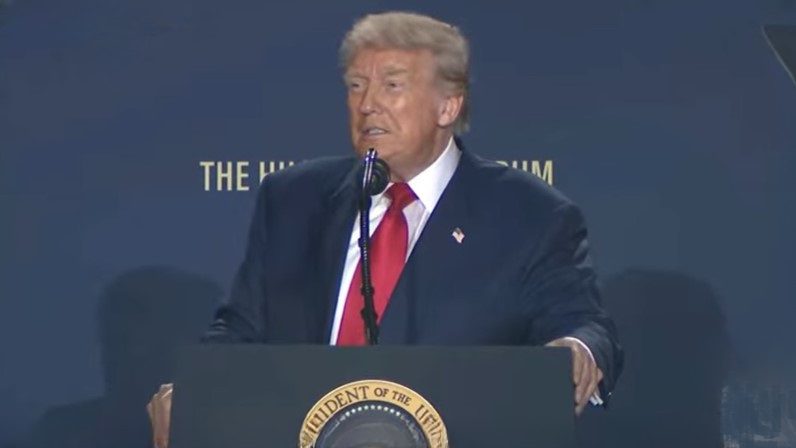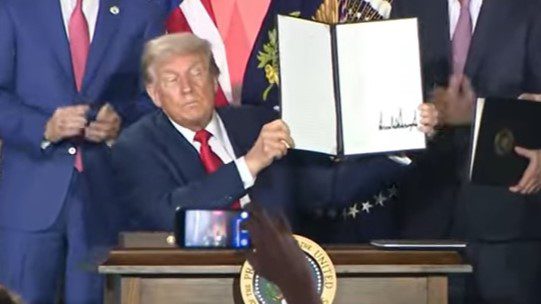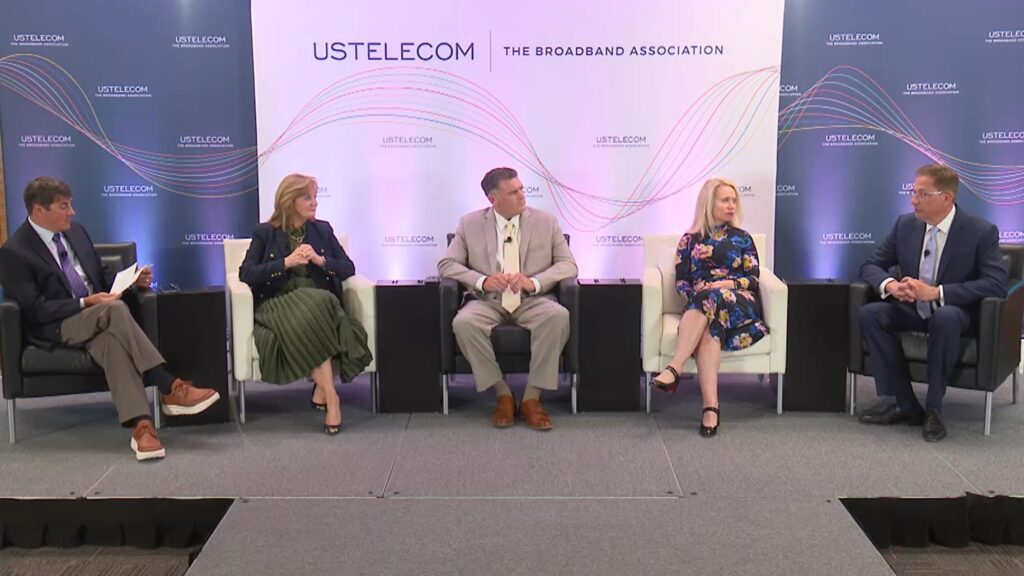White House AI Plan Emphasizes New Infrastructure Policies
Randy Sukow
|

President Trump introduced Winning the Race: America’s AI Action Plan, a series of 90 new policies meant to ensure the United States maintains a lead in the global artificial intelligence competition. Among the foremost priorities in the plan is clearing the regulatory path to AI infrastructure construction by reforming permitting and other regulations that could create delays. Proposed changes could affect both electric and fiber construction.
In addition to releasing the plan, Trump signed three executive orders streamlining permitting for data center construction, ordering policies to promote American AI technology exports, and encouraging “neutral” AI algorithms to prevent “woke AI.”

“Including factories, data centers, and power plants of all kinds, the United States will have total industrial technological supremacy,” Trump said in a speech before an AI conference Wednesday evening in Washington, DC. “Amazon, Google, Microsoft: They are all investing $320 billion or more in data centers and AI infrastructure this year … NVIDIA has committed $500 billion over the next four years.”
For the telecommunications industry, the administration is most concerned about existing red tape at the federal and state levels that could interfere with fiber and other communications infrastructure projects. Trump addressed removing federal policy barriers immediately after taking office in January through an executive order removing certain Biden Administration policies. The new plan calls for the FCC to lead an evaluation of “whether state AI regulations interfere with the agency’s ability to carry out its obligations and authorities under the Communications Act of 1934.”
The plan goes into greater detail on electric infrastructure. It describes the current U.S. power grid as “facing a confluence of challenges that demand strategic foresight and decisive action. Escalating demand driven by electrification and the technological advancements of AI are increasing pressures on the grid.” As new AI data centers appear throughout the nation, one of the greatest struggles will be providing adequate power to operate them.
The list of policy suggestions begins with a plan to “stabilize the grid” by preventing “premature decommissioning of critical power generation resources;” using “advanced grid management technologies” to optimize current electric transmission and distribution, and prioritizing the use of new electricity generation technologies, including enhanced geothermal, nuclear fission, and nuclear fusion.
“We have more of everything than anybody in terms of energy, and in May I signed an executive order to rapidly begin construction of safe, reliable nuclear reactors,” Trump said in his speech. “What they’ve done with nuclear is incredible. Long-term it’s inexpensive and safe.”
The plan notes that the administration has already reformed National Environmental Policy Act (NEPA) regulations to encourage data center and other electric generation projects. NRECA has praised NEPA reform to help maintain and improve the current grid before discussing data centers. “These changes represent a significant step toward improving the efficiency and predictability of the federal permitting process, helping to accelerate critical infrastructure development,” said Tony Campbell, CEO of East Kentucky Power Cooperative, in a recent House Natural Resources Committee hearing.
To that NEPA reform, the plan adds a proposal to create “new categorical exclusions under NEPA to cover data center-related actions that normally do not have a significant effect on the environment. Where possible, adopt categorical exclusions already established by other agencies so that each relevant agency can proceed with maximum efficiency.”
Most of the permitting policy proposals in the plan deal with energy-connected issues. But telecommunications companies participating in a July 22 data center policy “listening session” hosted by the National Telecommunications and Information Administration (NTIA) described permitting difficulties fiber projects face as well.
William Long, chief product officer for internet backbone company Zayo Group, said that when building fiber infrastructure to support data centers, they are passing hundreds of municipalities across state lines with differing permitting requirements for environmental studies. He compared building an internet backbone to building an interstate highway.
“The big network that we’re going to be building is going to connect the major metropolitan areas, but it’s going to go through a lot of underserved locations. It would be a shame if we don’t build the off-ramps to serve the local communities along the way,” Long said. “It’s not economical for us to build these off-ramps because there’s not enough demand. Of course, industries aren’t going to move into these rural communities if there’s no bandwidth available.”
“We spend a lot of time thinking about the permitting for the for the fiber itself, but we should also remember that we are required to build fiber huts or ILAs [in-line amplifiers] along these routes every 100 miles or so,” said Jordan Gross, director of State Government Affairs for networking company Lumen Technologies. “We’ve got hundreds of huts for either building or upgrading, and we’re required in these localities to go through the processes as if these were a major housing development.”
Update, July 24: Some early reaction to President Trump’s speech and AI plan:
USTelecom President and CEO Jonathan Spalter noticed the plan’s emphasis on energy infrastructure and comparably less on fiber. “Even the best-engineered AI needs a track built for speed—and that’s where fiber comes in. Fiber broadband is the fast lane for America’s AI future: powerful, secure, scalable, and built to go the distance, whether you’re in a big city or a heartland town,” he said.
FCC Chairman Brendan Carr seemed enthusiastic about carrying out the Commission’s part of the plan. “President Trump is committed to ensuring America’s global leadership in AI remains unquestioned and unchallenged … The President’s plan puts forward a series of actions that will ensure America’s AI remains the gold standard around the world. I look forward to supporting these national priorities.”


